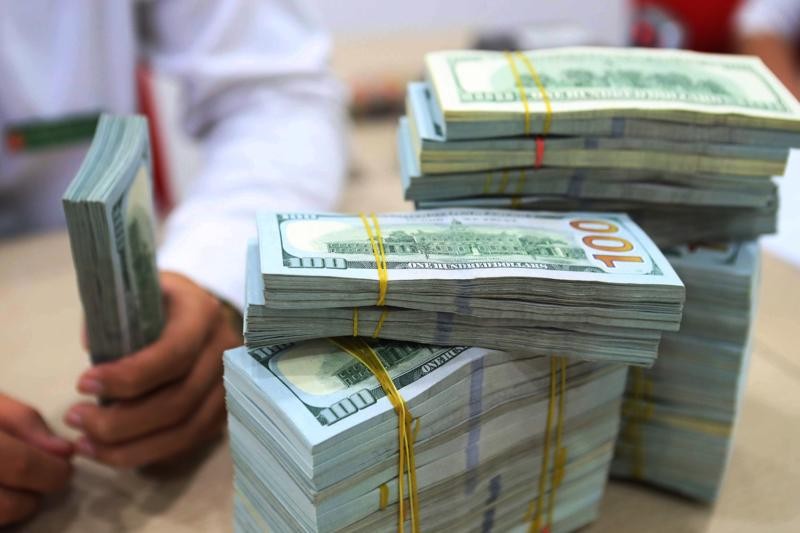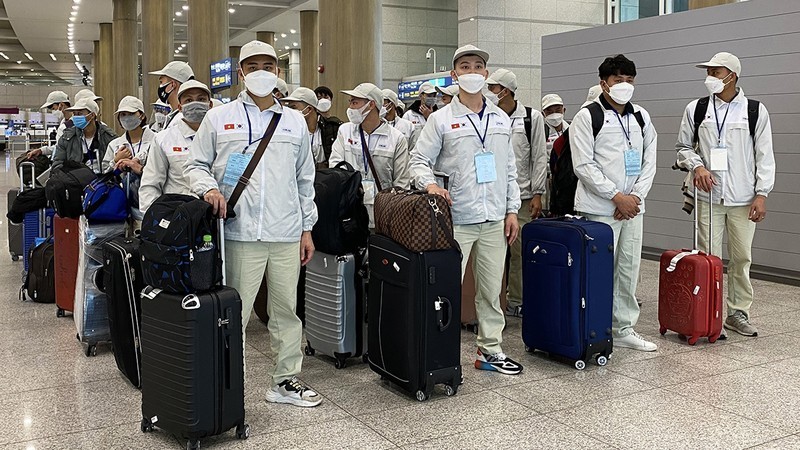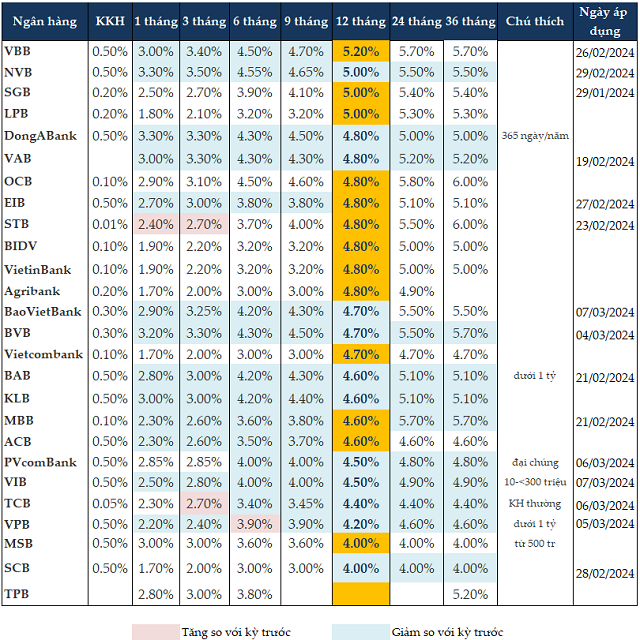Record-breaking remittances of 16 billion USD
Despite the difficult global economy, remittances to Vietnam continue to maintain a position among the top 10 countries with the highest remittance inflows in the world. Notably, in 2023, this money flow increased significantly, reaching a record high in recent years.
A report from Sacombank-SBR shows that by the end of 2023, remittances through Sacombank-SBR increased nearly 98% compared to the previous year, marking the highest growth rate in the past 5 years.
According to Mr. Nguyen Manh Dong, Deputy Head of the State Committee for Overseas Vietnamese Affairs, the remittances flowing into Vietnam in the last days of 2023 increased sharply and continued to rise during the Lunar New Year period, when overseas Vietnamese sent money to their relatives in Vietnam for spending during the biggest holiday of the year.
Sharing with the press, Mr. Dao Xuan Tuan, Head of Foreign Exchange Management Department (State Bank of Vietnam) estimated that the total remittances flowing into Vietnam in 2023 reached about 16 billion USD, a 32% increase compared to the previous year. Among them, the locality receiving the highest amount of remittances continues to be Ho Chi Minh City with nearly 9.5 billion USD, accounting for nearly 60% of the country’s total.

Despite the difficult global economy, remittances to Vietnam reached a record-breaking 16 billion USD
Mr. Nguyen Duc Lenh, Deputy Director of the State Bank’s Ho Chi Minh City Branch, said that the amount of remittances sent to the city in the past year reached a high growth rate, with 9.46 billion USD, an increase of 43.3% compared to 2022. This is the highest increase in the past 10 years.
Explaining the reason for the sharp increase in remittances to the city this year, Mr. Nguyen Duc Lenh said that after the Covid-19 pandemic, the global economy in general and Vietnam in particular faced many difficulties, and all sectors experienced a serious decline in revenue. Therefore, in order to promote economic recovery, some countries have begun to relax immigration controls and expand healthcare policies. This has helped increase the number of Vietnamese people going abroad for labor export. This is also part of the reason why remittances have increased compared to last year; at the same time, although overseas Vietnamese have faced many difficulties due to the economic recession, they still care about and support their relatives and families in their homeland.
Mr. Tran Minh Khoa, Chairman of Sacombank-SBR, said that in 2023, the total number of Vietnamese laborers going abroad for work or study increased by over 158,000, an increase of over 11% compared to 2022. “This is an important factor contributing to the increase in remittances flowing into Vietnam,” he said.
Deputy Minister of Foreign Affairs – Chairman of the State Committee for Overseas Vietnamese Affairs Le Thi Thu Hang said that currently there are 6 million Vietnamese living in 130 countries and territories, 80% of which are developed countries. In Ho Chi Minh City alone, there are about 2.9 million overseas Vietnamese living and working in various countries.
Mr. Nguyen Duc Lenh said that the Asian region contributes more than half of the remittances flowing into Ho Chi Minh City and records a growth rate of over 140% compared to 2022. Explaining this figure, Mr. Lenh said: “Asia is a region of economic and political stability, along with expanding economic relations and labor cooperation. Therefore, this will be a region that will have an impact on remittance growth in the future.”
In general, Mr. Tran Minh Khoa evaluates the increasingly important role of the Asian region in remittances, including the three largest labor markets: Japan, South Korea, and Taiwan.
According to statistics, the United States leads in total remittances to Vietnam annually as it is the country with the highest number of Vietnamese immigrants and residents; followed by the UK, Australia, and Canada. As for labor export, the majority of remittances come from major labor export markets such as Japan, South Korea, and Taiwan (China) …

An increase in the number of Vietnamese people going abroad for labor export has contributed to the increase in remittances.
Ensuring supply-demand forex relations
In the past 10 years, remittances have become a bright spot for Vietnam. Despite the general impact of the global economy, remittances to Vietnam experience a year-on-year decrease trend like other countries, but still maintain a position among the top 10 countries with the highest remittance inflows in the world and the top 3 countries with the most remittances received in the Asia-Pacific region.
Dr. Dinh Trong Thinh assesses that the sharp increase in remittances flowing into Vietnam is a very encouraging signal in the context of the global economy facing many difficulties and challenges in 2023, with economic recession in many countries. This shows the trust of overseas Vietnamese in the stable macroeconomic situation and favorable investment and business environment in the country, along with the policy mechanism of the government and the central bank to attract remittances. In addition, new policies to encourage capital into the production and business sectors are also one of the fundamental factors to attract this golden resource to Vietnam.
In addition, in recent years, the Government has implemented policies to encourage and create conditions for overseas Vietnamese to invest and support their relatives in Vietnam. There are procedures related to overseas Vietnamese and remittances that are increasingly open; there are feedback and support for overseas Vietnamese through Vietnam’s representative agencies in other countries.
To enhance the attraction of this “golden resource,” in the coming time, Dr. Dinh Trong Thinh believes that the government and management agencies need to continue to create a stable macroeconomic environment, increasingly open investment policies, administrative procedure reforms, etc.
He also suggests that Vietnam needs to gradually improve the quality of the labor force and ensure high discipline for overseas workers. “In addition to what we have been doing such as stabilizing the foreign exchange and foreign currency markets, we believe that the government needs to gradually improve the legal framework to support investment activities and expand production and business to see the results of transferring foreign currency to contribute many economic and social benefits,” he noted. He also added that banks should have policies such as capital support for overseas workers, preferential fees, exchange rates, and savings interest rates, application of technology to ensure quick, safe, and secure transactions to create favorable conditions for overseas Vietnamese to transfer money to Vietnam and limit remittances through unofficial and uncontrollable channels.
“Remittances have always been considered one of the sources contributing to ensuring the supply-demand relations of foreign currencies, while effectively supporting monetary policies, exchange rates, and the foreign exchange market,” the expert affirmed.















